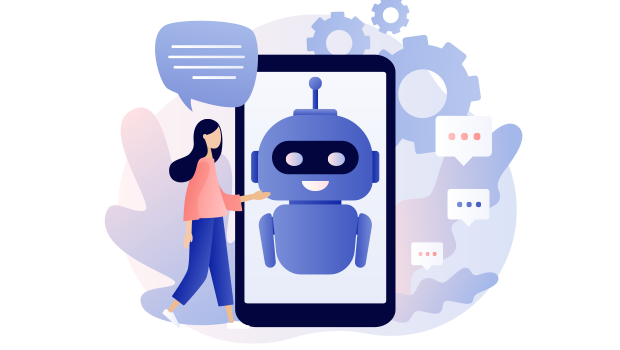ChatGPT may be in its fledgling stage of development, but we are already seeing promise in its capacity to transform how we perform tasks, maintain various roles, and even operate in different industries.
In September 2022, Forrester reported that Artificial Intelligence (AI) software expenditure is projected to reach an annual growth rate of 18 percent, doubling by 2025 and growing 50 percent faster than the global software market. Given the popularity of ChatGPT, it is not farfetched to imagine that a large part of that market will be chatbot technology, which combines AI and language to serve users with a human-like quality to its responses.
So, what does this mean for a CIO?
With cybersecurity a top priority for companies today, the CIO role is more important than ever. CIOs face enormous pressure to optimize enterprise security, map out potential threats, suppress existing threats, and do it all in collaboration with different company functions and departments to ensure their security strategy is deployed seamlessly.
[ Related read: 9 ways ChatGPT will help CIOs. ]
ChatGPT may ease the way CIOs engage with their responsibilities as well as with other departments and third-party vendors, facilitating the growth of this role as it becomes more valuable and central to the company.
Here are three key benefits ChatGPT will offer to transform the role and responsibilities of the CIO.
1. ChatGPT transforms the DevOps paradigm
ChatGPT will make the development of applications and solutions faster and more accurate. In doing so, it will completely change the DevOps paradigm.
ChatGPT will completely change the DevOps paradigm by making the development of applications and solutions faster and more accurate.
Developers in IT can use ChatGPT to generate code in various languages, which can significantly accelerate the time required to develop an application. ChatGPT also helps fix issues with code written by developers, which means that application development and operations and engineering can be done in a matter of days or weeks instead of months.
Another bonus: ChatGPT can help manage projects by sending reminders for deadlines, tracking progress, or even task delegation, thereby helping with the development lifecycle.
2. ChatGPT can help expedite cybersecurity solutions
CIOs are responsible for identifying and mitigating risks associated with technology and ensuring compliance and security. Greater threats to a company’s attack surface mean more work for the CIO to identify new methods, resources, and strategies to prevent them. It also involves a lot of paperwork.
ChatGPT can help expedite certain functions for the CIO, such as the paperwork (research, reports, data analytics, etc.) required to demonstrate security trends, threats, and the company’s security levels to other departments, security teams, and the C-suite.
Greater analysis of different threats and patterns could help ChatGPT identify any unaddressed minute gaps present in an enterprise’s attack surface that employees miss, making security and alerting less dependent on manual labor and reducing the possibility of human error.
Not only will the AI bot help reduce the time and cost involved in developing a security strategy and implementing a solution, but it will also increase accuracy in data, mitigate risks, and ensure compliance and security. CIOs can fill the gaps where a human perspective may be needed and provide a holistic view of the technology landscape.
Those passionate about cybersecurity, privacy, and regulatory compliance can shift to more high-level tasks and focus on elevating the company’s security hygiene, which can help them move toward a chief security officer (CSO) or chief privacy officer (CPO) role.
[ Also read CISO: A day in the life ]
3. ChatGPT may completely change how the CIO operates
At a basic level, ChatGPT can generate reports, summaries, data analyses, responses to consumer and technical questions, and general written comments. As a large language model, it will provide natural automated language processing for different applications and systems. In many ways, this will alleviate the more mindless or detail-oriented tasks so leaders can focus on high-level, strategic concerns.
CIOs can use ChatGPT to research information relevant to their industry and customer base easily and come up with relevant solutions.
CIOs can use ChatGPT to research information relevant to their industry and customer base easily and come up with relevant solutions. Findings can be translated and made accessible at a multinational level for global corporations with greater efficiency.
ChatGPT can analyze data and patterns to influence decision-making and automate repetitive tasks like scheduling meetings, generating reports, and sending reminders. This frees up time for CIOs to focus on more strategic initiatives, such as improving communications with employees, customers, and stakeholders by providing clear and concise answers.
Tasks like drafting emails and creating content for presentations are easily done using ChatGPT. CIOs can create and deliver quality presentations with relevant information quickly and efficiently.
As time passes, the AI bot will be even more closely aligned with other company devices and software, allowing them to operate in tandem and exponentially increase the rapid exchange of information, results, and recommendations for the next steps.
As ChatGPT comes into its own, it could completely transform the way the CIO operates. As it takes on the day-to-day tasks and increasingly serves as an assistant to the CIO, the AI bot will make it much simpler for leaders to concentrate on more big-picture and strategic interests relating to company policy, growth, and security.
The CIO’s role will only increase in importance, from taking the lead in identifying new opportunities with AI, data, cloud, automation, and more to working with other leaders to ensure their strategies align with the company vision and lead to positive ROI from technology investments. The AI bot will play a major part in this transformation.
Until then, it will support the CIO with more administrative tasks. Even as CIOs benefit from this facility, they must operate knowing that ChatGPT’s information is defined by the datasets on which it functions.
[ Want best practices for AI workloads? Get the eBook: Top considerations for building a production-ready AI/ML environment. ]




